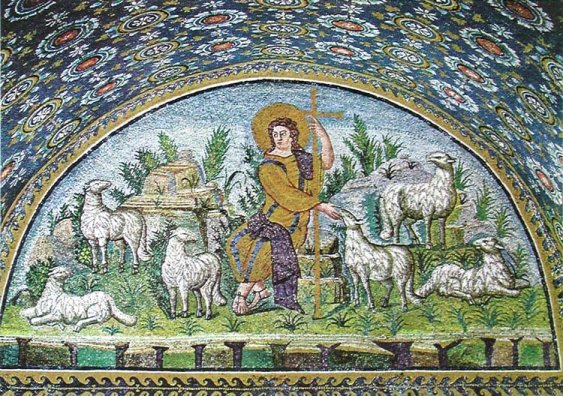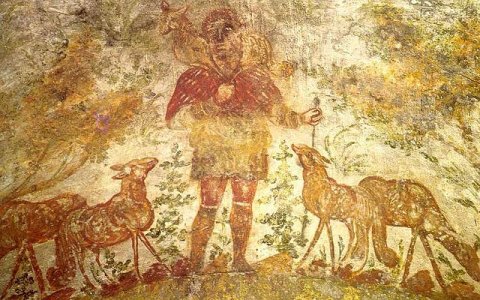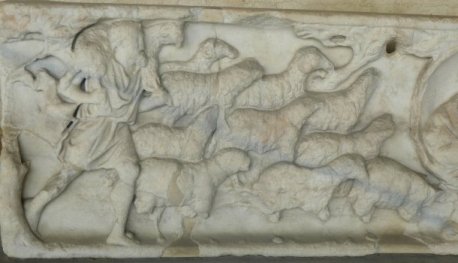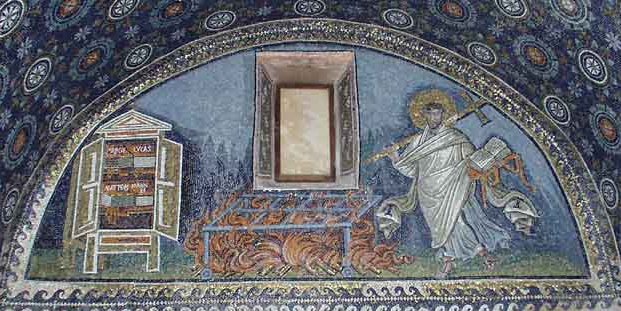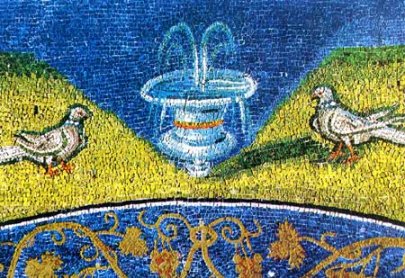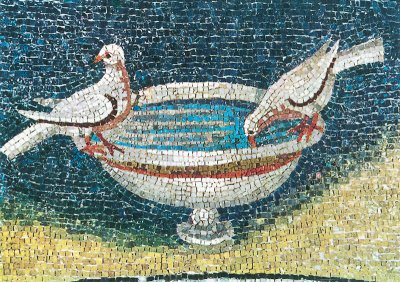|
The Mausoleum of Galla Placidia |
|
|
|
|
| The first thing to be said about the Mausoleum of
Galla Placidia is that - it is no such thing. After a life full of
incident, Galla Placidia was
almost certainly laid to rest in Rome in 450. Having said that, it seems
very likely that she was involved in the commissioning of the church to which
the building was originally attached, and possibly the mausoleum itself. Galla Placidia was a Chalcedonian
Christian, opposed to Arianism. If you walk along the Via Galla Placidia passing the the mausoleum on your left, the church of Santa maria Maggiore is on your right. The nearby ruins are what is left of Santa Croce, and it is believed that the mausoleum was originally an oratory attached to this church. It was a church of some importance, built in 417 as the church of the Imperial Palace, thus Galla's interest. Whether the oratory was later used as a mausoleum, or indeed whether it was a mausoleum first, is debateable. One possible reason for the reinforcement of the mausoleum theory is the appearance of the building. Its height is misleading. Ground levels have changed drastically over the years, due to the marshy subsoil. Originally this building was five feet taller, (or the surrounding land was five feet lower.) It would have been more imposing, less tomb-like. |
|
|
|
|
| Having said that, the interior does contain sarcophagi (though they were probably brought in at a later date) and, more tellingly, the mosaics do illustrate the victory of life over death. The image of the good shepherd, in particular, is frequently found in Roman Catacombs. | |
|
|
|
I have written a good deal on images of the good shepherd elsewhere - to read more head for the home page and click on 'The Shepherd and the Lamb'. Suffice it to say that, as with other mosaics in Ravenna, this harks back to much earlier iconography. |
|
|
|
|
The other lunette mosaic is much less straight-forward. The image of a saint rushing enthusiastically towards flames licking up through a gridiron seems to be an obvious representation of St Lawrence, and most academics have accepted this interpretation, but what is that bookcase (with the gospels in it) there for? The Wikipedia article on the mausoleum refers briefly to a paper by Gillian Mackie which puts forward the case for St Vincent. At first, this reference failed to convince me, but now, having managed to track down and read the paper in full, I think the case is very strong. the problem with it being Lawrence is that the iconography doesn't really fit. (He is usually shown being done to a turn on the gridiron, though, admittedly, the full iconography hadn't been worked out by this point.) The bookcase cannot really be linked specifically to Lawrence. Vincent was a Spanish saint, who was tortured for not giving up his Christian beliefs or being prepared to burn his books. The grisly torture is described in a poem by the fifth century Prudentius, and certainly gridiron roasting was involved, though he was finally martyred by being drowned at sea. Mackie points out the importance of the Vincent cult in Italy, and the connections with Galla Placidia herself; her family was of Spanish descent, and important years of her life were spent in Spain. A tiny but intriguing detail is that the gridiron has wheels. It is modelled on classical gridirons, used for roasting meat rather than saints. The wheels enabled it to be rolled over the fire - classical inventors hadn't yet come up with the idea of the garden barbecue, but were not far off. *New Light on the So-called Saint Lawrence Panel at the Mausoleum of Galla Placidia, Ravenna. Gesta, Vol 29, 1990. |
|
|
|
|
| Correctly named or no, the Mausoleum of Galla Placidia is a fascinating and very beautiful place. The quality of the mosaic work is breathtaking. Let's finish with a couple of wonderful details. | |
|
|
|

